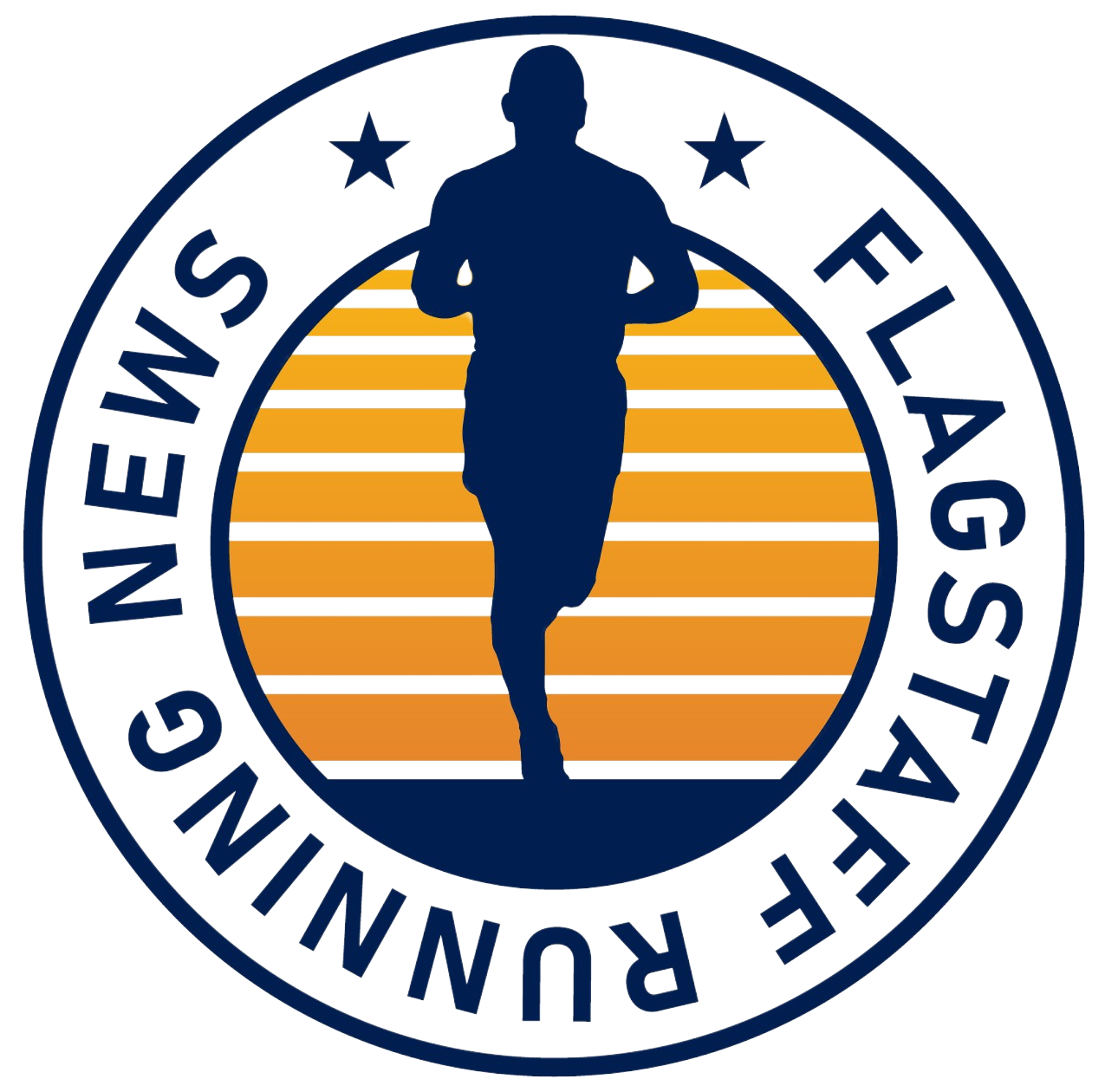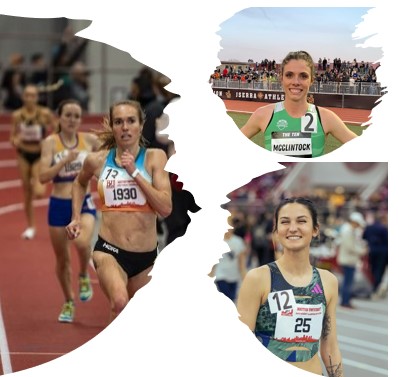So many subplots from last weekend’s The Ten, so little time…
Perhaps lost in all the talk about achieving Olympic standards on the track in San Juan Capistrano were three comeback stories that played out involving Flagstaff runners in the 10K and the 1,500.
In this case, we’re dealing with Rachel Smith, Elly Henes and Sammy McClintock.
The theme: comebacks.
The situations: All vastly different scenarios.
Olympian Smith continues to shatter all preconceptions of returning to elite, competitive running after giving birth. Just 11 months after delivering Nova, her daughter, Smith continues an eye-popping accelerated comeback by placing fifth in the “Paris” section of The Ten at 31:04.80.
Yes, Smith fell short of the 30:40 Olympic standard but easily got the Olympic Trials standard. Her 31:04.02 was a personal best, and it’s important to remember that the 10,000 meters isn’t even her preferred event. Saturday’s race in a stacked field was only her third outdoor track 10K in her career.
It was her third strong race in a row. On Jan. 27, in Boston, she set her indoor PR in the 5,000 meters at 15:10.10, then followed that two weeks later in Boston with her indoor mile PR at 4:11.28. Then came her breakthrough victory at the U.S. 15K Road Championships in Florida, beating Keira D’Amato in 48:26. Before that, at only six month postpartum, Smith finished second in the U.S. Road 5K Championshipds.
Judging by Saturday’s performance, plus her indoor success in Boston and USATF Road 15K crown, is it possible that Smith is a stronger, better runner than pre-Nova?
Afterward, she reflected on her postpartum racing success and said the key was to have no expectations.
“I really, truly honestly didn’t have expectations,” she said. “My husband (and coach Mike Smith) and I were very much like, hey, labor and delivery could play out a thousand ways. So (coming back) I was trying not to force anything. Maybe I thought there’s a scenario where I’m just starting to run and maybe there’s a scenario where I’m PR-ing.
“And I’m really grateful it’s the second. No expectations is always a smart move for me.”
What Smith failed to mention is the hard work returning to running while being a primary caregiver to an infant. According to her Instagram posts, Smith was running on an AlterG at four weeks, walking/jogging at six weeks and did her first outdoor run at seven weeks postpartum. That’s not counting the time spent on the bike and Elliptigo.
The Ten, however, was unknown territory for her. Afterward, she was beaming.
“This event is so new that I don’t feel really comfortable with it, but I’m curious about it,” Smith said. “That’s my third 10K ever and all three have been under 32 (minutes). I’m just under 11 months postpartum and I feel very happy to be PR-ing.”
Smith finished three seconds and three places ahead of Flagstaff’s Elly Henes (also coached by Mike Smith), and Henes, too, was elated with her 31:07.23 time.
That’s because Henes, too, is on the comeback trail, though her situation is wildly different than Smith’s.
On Oct. 13, in Flagstaff, Henes. 25, had surgery to repair a collapsed lung – a spontaneous pneumothorax. She said doctors told her that 20% of the lung had collapsed when a bleb (similar to a cyst, but not really) burst. Blebs form when a small collection of air between the lung and the outer surface of the lung forms. When the bleb ruptures, usually in the lung’s upper lobe, air gathers between the lung and the chest cavity.
Surgery is not always required, but not every patient with ruptured blebs is an elite runner dependent on her lung capacity.
So, the spontaneous pneumothorax made Henes, an NCAA champ from North Carolina State, sort of spontaneously freak out.
“When it happened, it wasn’t that scary, at first,” Henes said. “It felt like a back cramp that I had to breathe through. I went four days without going to the hospital. It would hurt when I was trying to run, but it wouldn’t hurt just going about my daily life. The doctors told me that some people will go to concerts or something with big sound wave lengths and it could happen to them, but they don’t know because they don’t compete at this level in sports that intense.
“They typically can heal on their own. I just had a really good doctor who understands marathons and told me, hey, if they come back, they come back in the first year, so we just need to go ahead and do the surgery.”
Henes said she is not aware – nor was she told by medical professionals – that living and training at 7,000 feet in Flagstaff may have contributed to the condition.
“I don’t know the research behind it. I was traveling a lot, coming up and down from altitude in Flagstaff. Maybe that contributed to it. I just we won’t know.”
In any case, Henes is ready to put the ordeal behind her and concentrate on the Olympic Trials in June. She credited Mike Smith’s “calming presence” for making her rehab and return less stressful.
“I can be a very high-emotional person, so it’s nice to have a coach who understands and calms me down,” she said. “I mean, my mother (NC State Coach Laurie Henes) did that, too, in college. Transitioning from her to another coach, I always thought that was going to be a little scary, but he’s been great.”
A good support crew also is what has McClintock, running for McKirdy Trained Elite, back on the track and the roads.
She ran her first track race in several years at The Ten’s 1,500 meters. It was rough going. McClintock found herself in a good position to finish in the top three, but, on the backstretch of the final lap, the runner in front of her abruptly pulled up, tripping McClintock and two runners behind her.
She recovered without falling and managed to finish sixth in 4:16.22.
Speaking of recovery, McClintock, who also ran at NC State, said she is finally healthy after a long period of recovery from serious right Achilles tendon issues that forced her to shut down and only do Elliptigo training for too long.
“I’ve put in so much work the last couple of years rehabbing,” she said. “We have a really good strength trainer, Jessie (Prescott), who’s out of Flagstaff. He’s really made strengthening my Achilles a priority. And he’s worked on other areas that, in my past, I was missing. So, I’m feeling really healthy right now.”
Her goal: to make the Olympic Trials in either the 1,500 or 5K, and see what happened.
But, for all three Flagstaff-based runners, the road back to competition seems a victory in itself.


Leave a Reply